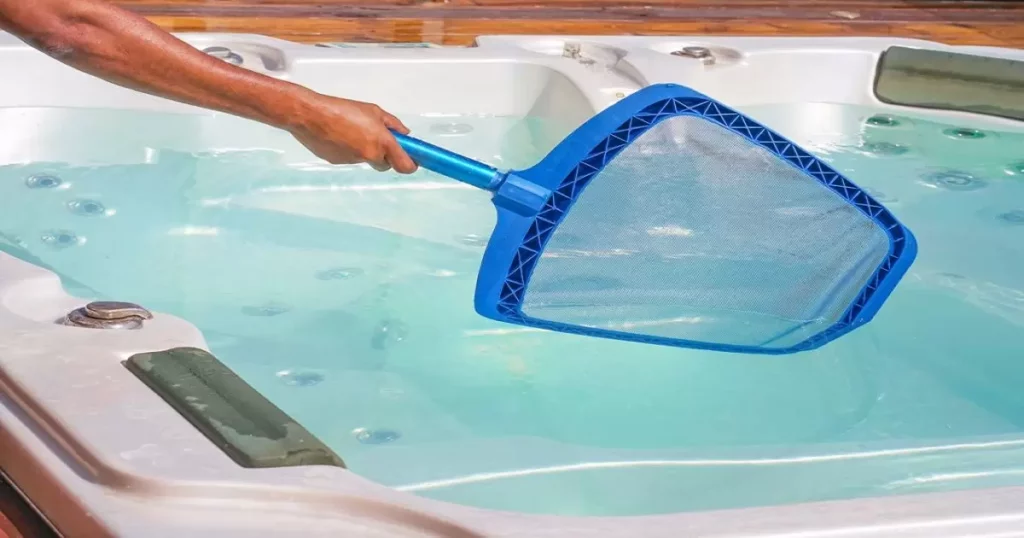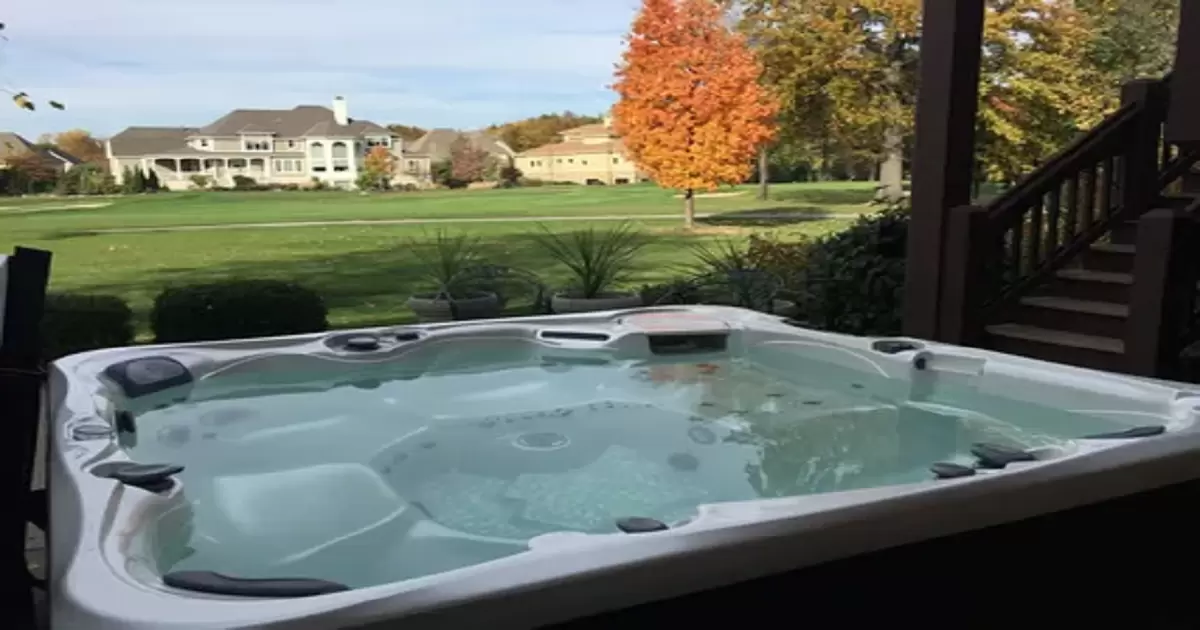A hot tub is a large tub or small pool full of water used for relaxation, pleasure, or hydrotherapy. Unlike a regular bathtub, a hot tub is designed to be used by more than one person at a time and typically includes features like jets for massage purposes. It is often heated to a higher temperature, making it ideal for soaking and unwinding.
What Is A Hot Tub? This simple question might evoke images of relaxation and comfort. Imagine immersing yourself in warm, bubbling water after a long day, the heat unwinding your muscles and the jets gently massaging away your stress. A hot tub is not just a pool of water; it’s an experience, a way to momentarily escape the hustle and bustle of daily life.
Hot tubs come in various sizes and styles, ranging from small, portable models to large, permanent fixtures. They can be found in private homes, spas, and even at outdoor retreats. The water in a hot tub is typically treated with sanitizing chemicals to ensure it’s clean and safe for use. These tubs are not just for relaxation; they can also offer therapeutic benefits, helping to soothe sore muscles and joints.
Definition of a Hot Tub
A hot tub is a large tub filled with heated water, used for relaxation, hydrotherapy, or socializing. Unlike traditional bathtubs, hot tubs are designed to be used by multiple people at once. They often feature water jets for massage purposes and are typically installed outdoors. Hot tubs can be a permanent fixture or portable units, providing flexibility in usage and location. They are particularly popular for their therapeutic benefits and social appeal.
The water in hot tubs is usually heated to a range between 100°F and 102°F, which is considered ideal for relaxation and muscle relaxation. These tubs are equipped with a filtration system to keep the water clean and safe for use. Hot tubs are made from various materials, including acrylic, fiberglass, and wood, each offering different aesthetic and functional benefits. The design and construction of hot tubs have evolved over time, making them more efficient and user-friendly.
Types of Hot Tubs
Hot tubs can be broadly categorized into portable and permanent models. Portable hot tubs are popular for their versatility and ease of installation. They can be inflatable or made of rigid materials and are relatively affordable. These tubs are ideal for people who rent their homes or who like to change their outdoor layout frequently.
Permanent hot tubs, on the other hand, are built-in fixtures, often made of durable materials like acrylic or concrete. They are typically more expensive and require a dedicated space. Permanent hot tubs offer more features and customization options, such as built-in seating and advanced jet systems. Both types come in various sizes, catering to different needs and preferences.
Benefits of Using a Hot Tub
| Benefit | Description | Additional Notes |
| Relaxation | Hot tubs provide a calming environment. | Ideal for stress relief and unwinding after a long day. |
| Social Interaction | Perfect for gatherings and social events. | Enhances backyard or outdoor spaces for entertaining. |
| Hydrotherapy | Therapeutic water jets ease muscle tension. | Beneficial for individuals with muscle and joint pain. |
| Improved Sleep Patterns | Warm water helps relax the body before bed. | Can lead to deeper, more restful sleep. |
| Increased Home Value | Adds luxury appeal to a property. | Can be a selling point in real estate transactions. |
Hot tubs offer numerous benefits, ranging from physical to social. They are a great way to relax and unwind, with the warm water and jet massages providing therapeutic relief to sore muscles and joints. The soothing effect of hot water is known to improve sleep quality, making hot tubs a popular choice for those seeking better rest.
In addition to health benefits, hot tubs also enhance social interactions. They provide an ideal setting for gatherings with friends and family. Having a hot tub can also increase the value of a property, making it an attractive feature in real estate. They transform outdoor spaces into luxurious retreats, ideal for relaxation and entertainment.
Components and Features of Hot Tubs
The main components of a hot tub include the shell, jets, heater, filter system, and control system. The shell is the interior surface of the tub, typically made of acrylic or fiberglass for durability and ease of cleaning. The jets are crucial for providing the massage effect, with some models offering customizable jet options.
The heater is responsible for maintaining the water at the desired temperature. Modern hot tubs are equipped with energy-efficient heaters to reduce operating costs. The filtration system keeps the water clean, and the control system allows users to adjust settings such as temperature and jet strength. Additional features can include lighting, sound systems, and water features, enhancing the overall experience.
Hot Tub Maintenance and Care

Maintaining a hot tub is essential for ensuring its longevity and safe operation. Regular cleaning of the shell and filter system is crucial. The water needs to be tested frequently to maintain the correct chemical balance, preventing bacteria growth and ensuring the water is safe for use.
In terms of care, it’s important to cover the hot tub when not in use to keep debris out and maintain water temperature. Winterizing the hot tub is necessary in colder climates to prevent damage from freezing temperatures. Regular professional servicing can help identify and resolve any potential issues before they become significant problems.
Health Considerations and Safety Tips
Using a hot tub is generally safe, but it’s important to consider certain health precautions. It’s advised to limit soak times to prevent overheating, particularly for pregnant women and individuals with health conditions. Children should always be supervised when near a hot tub.
Safety measures include ensuring the hot tub’s temperature does not exceed 104°F, as higher temperatures can be dangerous. Slip-resistant steps and handrails can be installed for safer entry and exit. It’s also crucial to ensure the chemical balance of the water is correct to prevent skin irritations and other health issues.
Installation and Placement of Hot Tubs
The installation of a hot tub requires careful planning, particularly regarding its placement. It should be installed on a stable, level surface capable of supporting its weight. Access to electricity and water is essential, and considering privacy and shelter from the elements is also important.
For portable hot tubs, choosing a location with easy access to electrical outlets and adequate drainage is key. For permanent installations, professional assistance is recommended to ensure proper setup and compliance with local regulations. Strategic placement can enhance the aesthetic appeal and functionality of the outdoor space.
Cost and Value Considerations for Hot Tubs
The cost of a hot tub varies widely depending on its type, size, and features. Portable hot tubs are generally more affordable, while permanent, high-end models can be a significant investment. It’s important to consider not only the initial purchase price but also the ongoing maintenance and operational costs.
Investing in a hot tub can add value to a property and enhance the quality of life. It’s a long-term investment that offers relaxation, social, and health benefits. When considering a hot tub, balancing budget constraints with desired features and long-term value is crucial.
FAQS
What Materials Are Used to Make Hot Tubs?
Hot tubs are commonly made from acrylic, fiberglass, or wood, offering durability and aesthetic appeal.
How Long Can You Safely Stay in a Hot Tub?
It’s recommended to limit hot tub sessions to 15-30 minutes to prevent overheating and dehydration.
Can Hot Tubs Be Used in Winter?
Yes, hot tubs can be used in winter, but they require proper winterizing to prevent damage from freezing temperatures.
Do Hot Tubs Require a Lot of Maintenance?
Regular maintenance is required for hot tubs, including water testing, chemical balancing, and periodic cleaning.
Are Hot Tubs Energy-Efficient?
Modern hot tubs are designed with energy efficiency in mind, but energy usage varies based on size, usage, and model.
Conclusion
A hot tub is a large tub filled with heated water. It is used for relaxation, hydrotherapy, and socializing. The water temperature is usually warmer than a standard bathtub, making it ideal for soothing muscles and unwinding. Hot tubs often feature jets for massage purposes and can be installed indoors or outdoors. They vary in size, accommodating anywhere from two to more than ten people.
Hot tubs are popular for their health benefits and leisure aspects. They can help reduce stress, ease muscle pain, and improve circulation. Many people enjoy socializing in hot tubs with friends and family. Regular maintenance is essential to keep the water clean and the system running efficiently. The use of a hot tub can be a relaxing and enjoyable experience for all ages.








